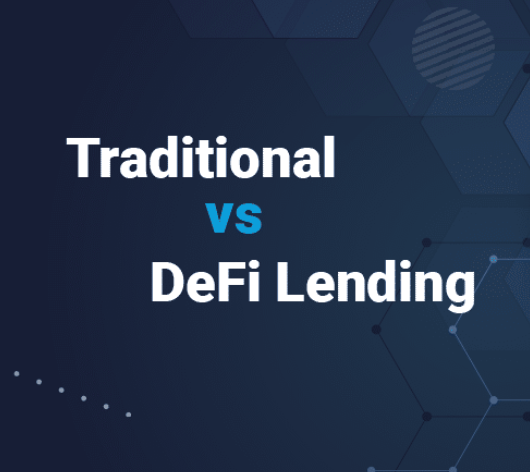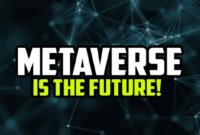bbc.towzdog.com – DeFi Lending vs Traditional Lending: A Comprehensive Guide to Modern and Conventional Borrowing In today’s evolving financial landscape, DeFi lending vs traditional lending has become a significant point of interest. With the rise of decentralized finance (DeFi) platforms, many are curious about how these modern solutions stack up against long-established traditional lending practices. Understanding these two methods can help borrowers and investors make more informed financial decisions.
In this article, we’ll break down DeFi lending and traditional lending, comparing their advantages, drawbacks, and future potential. By the end, you’ll have a clearer picture of how these two lending options differ and which one may be the right choice for you.
What is DeFi Lending?
DeFi, short for decentralized finance, represents a shift in the financial world where traditional banking services are offered without central authority or intermediaries like banks. DeFi lending allows individuals to lend or borrow assets on decentralized platforms, typically using blockchain technology. This setup eliminates the need for intermediaries, making transactions more transparent and, often, quicker.
How Does DeFi Lending Work?
DeFi lending operates through smart contracts, which are self-executing agreements written in code and deployed on a blockchain. A smart contract automatically enforces the terms of the loan, ensuring that once the conditions are met, funds are transferred securely and directly between parties.
Key Components of DeFi Lending
- Blockchain Technology: DeFi lending primarily operates on public blockchains, such as Ethereum, which ensures that transactions are transparent and secure.
- Smart Contracts: These eliminate the need for intermediaries by executing the terms of the loan agreement automatically.
- Cryptocurrency and Stablecoins: Loans are generally conducted using cryptocurrencies or stablecoins to maintain value consistency. Common stablecoins include USDC and DAI.
Example of DeFi Lending Platforms
Popular DeFi platforms include Aave, Compound, and MakerDAO. These platforms enable users to deposit cryptocurrencies and earn interest or to take out loans against their deposited assets.
Outlink: For more on how Aave operates and the various benefits it offers, visit Aave’s official site.
Traditional Lending Explained
In contrast to DeFi lending, traditional lending involves established financial institutions such as banks, credit unions, and other regulated lenders. These institutions serve as trusted intermediaries, evaluating borrower creditworthiness and managing the loan repayment process. Traditional loans are commonly used for mortgages, car loans, and personal loans.
How Traditional Lending Works
Traditional lending relies on a credit-based model where borrowers are required to meet specific criteria, including credit scores, income levels, and employment status. Once approved, borrowers receive funds and make regular repayments with interest over a specified period.
Key Elements of Traditional Lending
- Credit Scores and Reports: Financial institutions use credit scores to assess the risk associated with lending to a particular borrower.
- Interest Rates: Rates are typically determined by creditworthiness and market conditions, and they can be fixed or variable.
- Regulatory Oversight: Traditional lending is governed by strict regulations designed to protect both lenders and borrowers.
Examples of Traditional Lending Institutions
Banks such as JPMorgan Chase, Bank of America, and Wells Fargo are some of the largest providers of traditional loans in the United States, offering everything from personal loans to large-scale mortgages.
Key Differences Between DeFi Lending and Traditional Lending
Understanding the primary differences between DeFi lending and traditional lending can help you decide which option aligns better with your financial needs.
| Feature | DeFi Lending | Traditional Lending |
|---|---|---|
| Intermediaries | No intermediaries; operates on a decentralized system | Relies on banks and financial institutions |
| Credit Requirements | Often none; usually requires cryptocurrency collateral | Requires credit score, income verification, and other financial checks |
| Transparency | Highly transparent due to blockchain technology | Limited transparency; banks have control over loan processes |
| Accessibility | Accessible globally, though requires some technical knowledge | Limited by geography and borrower creditworthiness |
| Transaction Speed | Generally fast; transactions can be completed within minutes | Often slow; involves lengthy approval and paperwork |
| Risks | Smart contract vulnerabilities, cryptocurrency price volatility | Centralized risks; possible regulatory changes and interest rate fluctuations |
Advantages and Disadvantages of DeFi and Traditional Lending
Pros and Cons of DeFi Lending
Advantages:
- Accessibility: DeFi platforms are open to users globally, often requiring only a digital wallet and cryptocurrency assets.
- Transparency: Blockchain records all transactions, enabling transparency and traceability.
- Speed: With no intermediaries, transactions and loans can be processed in minutes rather than days.
Disadvantages:
- Volatility: DeFi loans rely on crypto assets, which are highly volatile. Borrowers risk margin calls if the asset’s value falls.
- Smart Contract Risks: Bugs in smart contracts can lead to security issues, as seen in various DeFi hacks over the years.
Pros and Cons of Traditional Lending
Advantages:
- Stability: Traditional lending is generally more stable, with fixed interest rates and secure financial institutions.
- Credit Building: Traditional loans contribute to a borrower’s credit score, helping them qualify for future credit.
Disadvantages:
- Access Barriers: Traditional lending is often inaccessible to those without high credit scores or significant income.
- Slow Process: Loan approvals can take days or even weeks, with complex paperwork requirements.
Future of DeFi Lending and Traditional Lending
As the financial sector continues to evolve, DeFi lending and traditional lending may intersect in new ways. The rise of decentralized finance has sparked interest among institutional investors, and some banks are beginning to explore blockchain-based solutions.
Growth in DeFi Lending
According to recent data from DeFi Pulse, the total value locked (TVL) in DeFi protocols reached over $50 billion in 2023, highlighting strong demand and growing user trust. This increase in TVL underscores a shift towards decentralized finance as more users seek alternatives to traditional banking systems.
Regulatory Landscape for DeFi and Traditional Finance
Regulations play a crucial role in shaping the future of both DeFi and traditional lending. While traditional banks operate under clear legal frameworks, DeFi remains in a gray area in many regions. Governments worldwide are developing policies to address DeFi’s unique challenges, which could impact how decentralized finance evolves. Some experts believe that as regulatory clarity increases, DeFi lending will become more accessible to mainstream users.
Conclusion: Choosing Between DeFi Lending and Traditional Lending
In comparing DeFi lending vs traditional lending, it’s clear that each option offers unique benefits and potential risks. DeFi lending may appeal to those comfortable with cryptocurrency and blockchain technology, providing greater transparency and access. However, traditional lending remains a reliable choice for individuals who prioritize stability and prefer working within established financial systems.
Your choice ultimately depends on your financial goals, risk tolerance, and familiarity with technology. As DeFi continues to grow, it may become a viable alternative or supplement to traditional lending, potentially changing how we think about borrowing and lending in the years to come.




